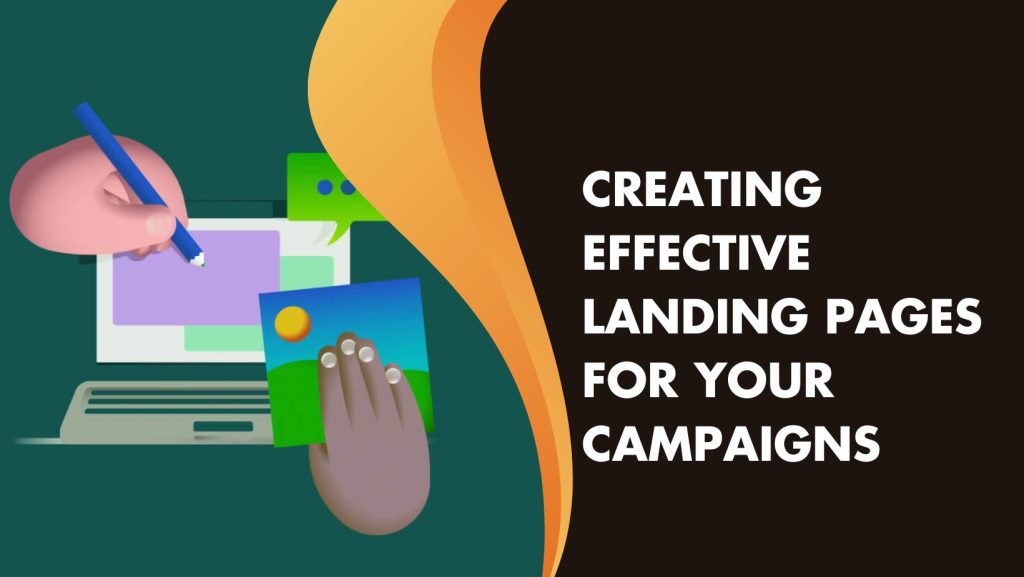Are you tired of seeing your campaign efforts fall flat? It’s time to take your landing pages to the next level. In this blog post, we’ll show you how to create effective landing pages that will capture your audience’s attention and drive them to take action. Say goodbye to underwhelming results and hello to success with our tips for creating high-converting landing pages. Let’s get started!
Introduction to Landing Pages and their Importance in Campaigns
Welcome to the gateway of online marketing success! Landing pages are the unsung heroes of digital campaigns, silently working behind the scenes to convert curious visitors into loyal customers. In this blog post, we will unravel the art and science of creating effective landing pages that captivate audiences, drive conversions, and propel your campaigns towards triumph. Buckle up as we dive deep into the world of crafting landing pages that leave a lasting impression on your target audience.
Understanding the Target Audience and Setting Goals for Your Landing Page
Understanding your target audience is crucial when creating an effective landing page for your campaigns. Take the time to research and analyze their demographics, behaviors, and preferences. By knowing who you are targeting, you can tailor your messaging and design to resonate with them.
Setting clear goals for your landing page is equally important. Define what action you want visitors to take when they land on your page – whether it’s signing up for a newsletter, making a purchase, or booking a demo. Your goals should align with the overall objectives of your campaign and be measurable so you can track success.
Consider factors like conversion rates, bounce rates, and engagement metrics when setting these goals. This will help ensure that your landing page is optimized for driving desired actions from your target audience.
Elements of an Effective Landing Page Design
When it comes to creating an effective landing page for your campaign, the design plays a crucial role in capturing the attention of your audience. The headline and subheadline are the first things visitors see, so make sure they are clear and compelling.
The call-to-action button should stand out and clearly indicate what action you want users to take next. Visual elements such as images or videos can help convey your message more effectively and keep visitors engaged.
Form fields for lead capture should be kept simple and easy to fill out to encourage conversions. Including social proof like testimonials or reviews can build trust with potential customers.
Overall, a well-designed landing page that incorporates these elements will increase the chances of converting visitors into leads or customers for your campaign.
– Headline and Subheadline
When it comes to creating effective landing pages, the headline and subheadline play a crucial role in capturing the visitor’s attention right off the bat. Your headline should be clear, concise, and compelling – make sure it conveys the main benefit or value proposition of your offer. Keep it short and to the point to grab the reader’s interest immediately.
The subheadline acts as a supporting element to further elaborate on what your page is about. It can provide additional information or context that complements the headline and entices visitors to keep reading. Use this space wisely to address any potential objections or highlight key features that set your offering apart from competitors.
Remember, both your headline and subheadline should work together seamlessly to communicate your message effectively and encourage visitors to take action. Experiment with different wording, tone, and messaging strategies through A/B testing to see which combinations resonate best with your target audience for optimal results.
– Call-to-Action Button
The call-to-action (CTA) button is the heart of a landing page, guiding visitors towards taking the desired action. It should be prominently placed and visually appealing to attract attention. A compelling CTA button uses persuasive language that prompts immediate action, such as “Get Started” or “Buy Now.”
The color and design of the CTA button play a crucial role in catching the eye of visitors. Use contrasting colors to make it stand out on the page and ensure it is easily clickable on both desktop and mobile devices. Keep the text concise yet clear so that users understand what will happen when they click.
Experiment with different wording, colors, sizes, and placements for your CTA button through A/B testing to see which variations yield better results in terms of conversions. Remember, a well-crafted CTA button can significantly impact the success of your landing page campaign by encouraging visitors to take action swiftly.
– Visual Elements (Images, Videos, etc.)
When it comes to creating effective landing pages, incorporating visual elements like images and videos can significantly enhance the overall user experience. Visuals have the power to capture attention instantly and convey information more effectively than text alone.
Images should be high-quality, relevant, and align with your brand identity. They should complement the message you want to convey on your landing page. Avoid using generic stock photos that may come off as inauthentic or disconnected from your content.
Videos are also a powerful tool for engaging visitors and keeping them interested in your offer. A short video introducing your product or service can help explain its benefits in a more dynamic way than written content alone.
Remember to optimize all visual elements for fast loading times to prevent users from losing interest due to slow page speeds. Additionally, ensure that visuals are responsive and display correctly across different devices for a seamless user experience.
– Form Fields and Lead Capture
Form fields and lead capture are crucial components of an effective landing page. When designing your form, keep it simple and only ask for essential information to avoid overwhelming visitors. Consider the balance between gathering valuable data and not deterring potential leads with a lengthy form.
Strategically place the form on the page where it is easily visible, typically near the call-to-action button. Use concise and clear labels for each field to guide users efficiently. Implementing autofill options can also enhance user experience by making the process quicker and more convenient.
Incorporating validation messages can reduce errors and provide instant feedback to users, enhancing their interaction with the form. Utilize a compelling CTA that encourages visitors to take action after filling out the form, such as downloading a resource or subscribing to a newsletter.
Remember, optimizing your form fields for mobile responsiveness is key in today’s digital landscape where many users browse on smartphones and tablets. By prioritizing user-friendly design and streamlined lead capture methods, you can increase conversions on your landing page effectively.
– Social Proof and Testimonials
When it comes to creating effective landing pages, incorporating social proof and testimonials can make a significant impact. Social proof is the psychological phenomenon where people assume the actions of others in an attempt to reflect correct behavior for a given situation. By showcasing positive reviews, testimonials, or endorsements from satisfied customers on your landing page, you build credibility and trust with your audience.
Testimonials provide real-life examples of how your product or service has benefited others. They offer a personal touch that resonates with potential customers on an emotional level. When crafting your landing page, strategically place these social proofs throughout the layout to reinforce key selling points and alleviate any doubts or hesitations visitors may have.
Including quotes from happy customers sharing their experiences can help prospects envision themselves enjoying similar benefits. Remember to keep testimonials authentic and relatable to establish genuine connections with your audience.
Tips for Writing Compelling and Persuasive Copy on Landing Pages
When it comes to writing copy for your landing page, remember that less is more. Keep your messaging clear, concise, and focused on the benefits your product or service offers. Use compelling language that speaks directly to the needs and desires of your target audience.
Highlight key selling points in a way that resonates with visitors. Address their pain points and offer solutions in a persuasive manner. Utilize powerful words like “free,” “exclusive,” or “limited-time offer” to create a sense of urgency and drive action.
Incorporate storytelling into your copy to engage visitors emotionally. Paint a picture of how their lives will improve by using your product or service. Use testimonials and success stories to build credibility and trust with potential customers.
Remember to include a strong call-to-action that clearly tells visitors what you want them to do next. Whether it’s signing up for a newsletter, making a purchase, or scheduling a demo, make it easy for them to take the desired action.
The Role of A/B Testing
In the world of digital marketing, creating effective landing pages is crucial for the success of your campaigns. By understanding your target audience, setting clear goals, and incorporating essential elements like compelling headlines, strong call-to-action buttons, visual components, form fields for lead capture, and social proof, you can create landing pages that drive conversions.
Additionally, crafting persuasive copy that resonates with your audience’s needs and desires is key to engaging visitors and convincing them to take action. Remember to always test different variations through A/B testing to optimize your landing page performance continuously.
By following these strategies and staying attuned to the preferences of your audience through data-driven insights from A/B testing, you can create landing pages that not only attract visitors but also convert them into valuable leads or customers. So go ahead, implement these tips in your next campaign and watch as your landing pages become powerful assets in achieving your marketing objectives.
Conclusion
As we’ve discussed, landing pages are a crucial component of any marketing campaign. By following these tips and best practices, you can create effective landing pages that will drive conversions and ultimately lead to the success of your campaigns. Remember to keep your messaging clear and concise, use eye-catching visuals, and optimize for mobile devices. With continuous testing and improvement, your landing pages will become even more successful in engaging and converting your target audience. So go ahead and start implementing these strategies to take your campaigns to the next level!


